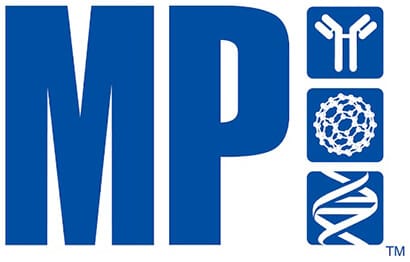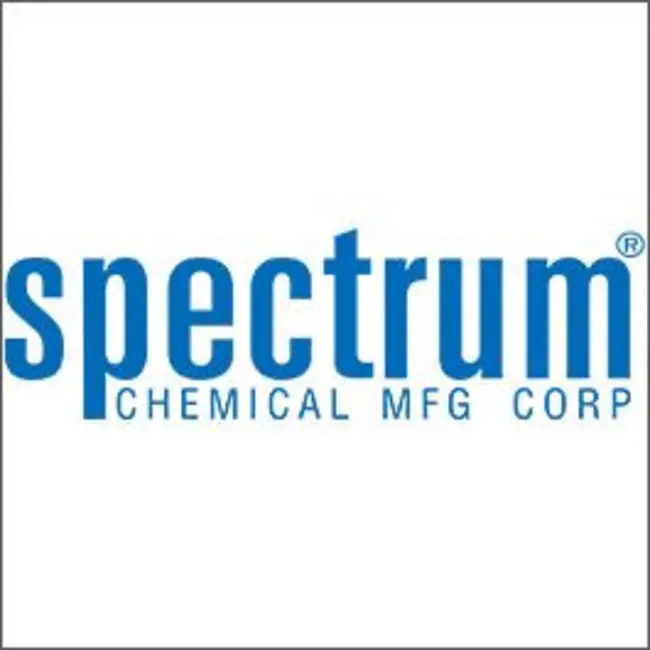GenScript Biotech
Showing 2351–2400 of 2554 results
-
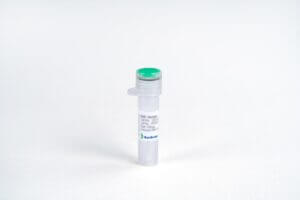
TGF-β 2, Human
$194.06 Add to cart View Product DetailsTransforming growth factor beta-2 (TGF-β2) is a secreted protein which belongs to the TGF-beta family. It is known as a cytokine that performs many cellular functions and has a vital role during embryonic development. The precursor is cleaved into mature TGF-beta-2 and LAP, which remains non-covalently linked to mature TGF-beta-2 rendering it inactive. It is an extracellular glycosylated protein. It is known to suppress the effects of interleukin dependent T-cell tumors. Defects in TGFB2 may be a cause of non-syndromic aortic disease (NSAD).
-

TGF-β 2, Human
$543.38 Add to cart View Product DetailsTransforming growth factor beta-2 (TGF-β2) is a secreted protein which belongs to the TGF-beta family. It is known as a cytokine that performs many cellular functions and has a vital role during embryonic development. The precursor is cleaved into mature TGF-beta-2 and LAP, which remains non-covalently linked to mature TGF-beta-2 rendering it inactive. It is an extracellular glycosylated protein. It is known to suppress the effects of interleukin dependent T-cell tumors. Defects in TGFB2 may be a cause of non-syndromic aortic disease (NSAD).
-
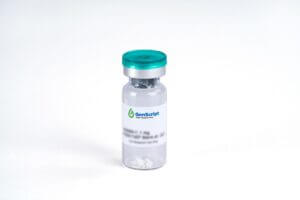
TGF-β 2, Mouse
$2,876.44 Add to cart View Product DetailsTransforming growth factor beta 2 (TGF-β2) is a member of TGF-beta superfamily that shares a characteristic cysteine knot structure. Mice with TGF-β2 gene deletion show defects in development of cardiac, lung, craniofacial, limb, spinal column, eye, inner ear and urogenital systems. All TGF-β isoforms signal via the same heteromeric receptor complex, consisting of a ligand binding TGF-β receptor type II (TβR-II), and a TGF-β receptor type I (TβR-I). Signal transduction from the receptor to the nucleus is mediated via SMADs. TGF-β expression is found in cartilage, bone, teeth, muscle, heart, blood vessels, hematopoietic cells, lung, kidney, gut, liver, eye, ear, skin, and the nervous system.
-

TGF-β 2, Mouse
$194.06 Add to cart View Product DetailsTransforming growth factor beta 2 (TGF-β2) is a member of TGF-beta superfamily that shares a characteristic cysteine knot structure. Mice with TGF-β2 gene deletion show defects in development of cardiac, lung, craniofacial, limb, spinal column, eye, inner ear and urogenital systems. All TGF-β isoforms signal via the same heteromeric receptor complex, consisting of a ligand binding TGF-β receptor type II (TβR-II), and a TGF-β receptor type I (TβR-I). Signal transduction from the receptor to the nucleus is mediated via SMADs. TGF-β expression is found in cartilage, bone, teeth, muscle, heart, blood vessels, hematopoietic cells, lung, kidney, gut, liver, eye, ear, skin, and the nervous system.
-

TGF-β 2, Mouse
$543.38 Add to cart View Product DetailsTransforming growth factor beta 2 (TGF-β2) is a member of TGF-beta superfamily that shares a characteristic cysteine knot structure. Mice with TGF-β2 gene deletion show defects in development of cardiac, lung, craniofacial, limb, spinal column, eye, inner ear and urogenital systems. All TGF-β isoforms signal via the same heteromeric receptor complex, consisting of a ligand binding TGF-β receptor type II (TβR-II), and a TGF-β receptor type I (TβR-I). Signal transduction from the receptor to the nucleus is mediated via SMADs. TGF-β expression is found in cartilage, bone, teeth, muscle, heart, blood vessels, hematopoietic cells, lung, kidney, gut, liver, eye, ear, skin, and the nervous system.
-

TGF-β 3, Human
$2,876.44 Add to cart View Product DetailsTransforming growth factor beta 3(TGFB3) is a member of a TGF -β superfamily which is defined by their structural and functional similarities. TGFB3 is secreted as a complex with LAP. This latent form of TGFB3 becomes active upon cleavage by plasmin, matrix metalloproteases, thrombospondin -1, and a subset of integrins. It binds with high affinity to TGF- β RII, a type II serine/threonine kinase receptor. TGFB3 is involved in cell differentiation, embryogenesis and development. It is believed to regulate molecules involved in cellular adhesion and extracellular matrix (ECM) formation during the process of palate development. Without TGF-β3, mammals develop a deformity known as a cleft palate.
-

TGF-β 3, Human
$194.06 Add to cart View Product DetailsTransforming growth factor beta 3(TGFB3) is a member of a TGF -β superfamily which is defined by their structural and functional similarities. TGFB3 is secreted as a complex with LAP. This latent form of TGFB3 becomes active upon cleavage by plasmin, matrix metalloproteases, thrombospondin -1, and a subset of integrins. It binds with high affinity to TGF- β RII, a type II serine/threonine kinase receptor. TGFB3 is involved in cell differentiation, embryogenesis and development. It is believed to regulate molecules involved in cellular adhesion and extracellular matrix (ECM) formation during the process of palate development. Without TGF-β3, mammals develop a deformity known as a cleft palate.
-

TGF-β 3, Human
$543.38 Add to cart View Product DetailsTransforming growth factor beta 3(TGFB3) is a member of a TGF -β superfamily which is defined by their structural and functional similarities. TGFB3 is secreted as a complex with LAP. This latent form of TGFB3 becomes active upon cleavage by plasmin, matrix metalloproteases, thrombospondin -1, and a subset of integrins. It binds with high affinity to TGF- β RII, a type II serine/threonine kinase receptor. TGFB3 is involved in cell differentiation, embryogenesis and development. It is believed to regulate molecules involved in cellular adhesion and extracellular matrix (ECM) formation during the process of palate development. Without TGF-β3, mammals develop a deformity known as a cleft palate.
-
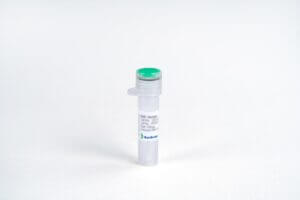
TGF-β1, Human
$2,876.44 Add to cart View Product DetailsTGF-β1 (transforming growth factor beta 1) is one of three closely related mammalian members of the large TGF-β1 superfamily that share a characteristic cystine knot structure. TGF-β1, -2 and -3 are highly pleiotropic cytokines that act as cellular switches to regulate processes such as immune function, proliferation and epithelial-mesenchymal transition. Each TGF-β isoform has some non-redundant function; for TGF-β1, mice with targeted deletion show defects in hematopoiesis and endothelial differentiation and died of overwhelming inflammation. TGF-β1 signaling begins with high-affinity binding to a type II ser/thr kinase receptor termed TGF-β RII. This receptor then phosphorylates and activates a second ser/thr kinase receptor, TGF-β RI (also called activin receptor‑like kinase (ALK)-5), or alternatively, ALK-1. This complex phosphorylates and activates Smad proteins that regulate transcription.
-

TGF-β1, Human
$146.63 Add to cart View Product DetailsTGF-β1 (transforming growth factor beta 1) is one of three closely related mammalian members of the large TGF-β1 superfamily that share a characteristic cystine knot structure. TGF-β1, -2 and -3 are highly pleiotropic cytokines that act as cellular switches to regulate processes such as immune function, proliferation and epithelial-mesenchymal transition. Each TGF-β isoform has some non-redundant function; for TGF-β1, mice with targeted deletion show defects in hematopoiesis and endothelial differentiation and died of overwhelming inflammation. TGF-β1 signaling begins with high-affinity binding to a type II ser/thr kinase receptor termed TGF-β RII. This receptor then phosphorylates and activates a second ser/thr kinase receptor, TGF-β RI (also called activin receptor‑like kinase (ALK)-5), or alternatively, ALK-1. This complex phosphorylates and activates Smad proteins that regulate transcription.
-

TGF-β1, Human
$370.88 Add to cart View Product DetailsTGF-β1 (transforming growth factor beta 1) is one of three closely related mammalian members of the large TGF-β1 superfamily that share a characteristic cystine knot structure. TGF-β1, -2 and -3 are highly pleiotropic cytokines that act as cellular switches to regulate processes such as immune function, proliferation and epithelial-mesenchymal transition. Each TGF-β isoform has some non-redundant function; for TGF-β1, mice with targeted deletion show defects in hematopoiesis and endothelial differentiation and died of overwhelming inflammation. TGF-β1 signaling begins with high-affinity binding to a type II ser/thr kinase receptor termed TGF-β RII. This receptor then phosphorylates and activates a second ser/thr kinase receptor, TGF-β RI (also called activin receptor‑like kinase (ALK)-5), or alternatively, ALK-1. This complex phosphorylates and activates Smad proteins that regulate transcription.
-

TGFβ1, Bovine
$2,742.75 Add to cart View Product DetailsTGF-β1 (transforming growth factor beta 1) is one of three closely related mammalian members of the large TGF-β1 superfamily that share a characteristic cystine knot structure. TGF-β1, -2 and -3 are highly pleiotropic cytokines that act as cellular switches to regulate processes such as immune function, proliferation and epithelial-mesenchymal transition. Each TGF-β isoform has some non-redundant function; for TGF-β1, mice with targeted deletion show defects in hematopoiesis and endothelial differentiation and died of overwhelming inflammation. TGF-β1 signaling begins with high-affinity binding to a type II ser/thr kinase receptor termed TGF-β RII. This receptor then phosphorylates and activates a second ser/thr kinase receptor, TGF-β RI (also called activin receptor‑like kinase (ALK)-5), or alternatively, ALK-1. This complex phosphorylates and activates Smad proteins that regulate transcription.
-

TGFβ1, Bovine
$142.31 Add to cart View Product DetailsTGF-β1 (transforming growth factor beta 1) is one of three closely related mammalian members of the large TGF-β1 superfamily that share a characteristic cystine knot structure. TGF-β1, -2 and -3 are highly pleiotropic cytokines that act as cellular switches to regulate processes such as immune function, proliferation and epithelial-mesenchymal transition. Each TGF-β isoform has some non-redundant function; for TGF-β1, mice with targeted deletion show defects in hematopoiesis and endothelial differentiation and died of overwhelming inflammation. TGF-β1 signaling begins with high-affinity binding to a type II ser/thr kinase receptor termed TGF-β RII. This receptor then phosphorylates and activates a second ser/thr kinase receptor, TGF-β RI (also called activin receptor‑like kinase (ALK)-5), or alternatively, ALK-1. This complex phosphorylates and activates Smad proteins that regulate transcription.
-

TGFβ1, Bovine
$589.09 Add to cart View Product DetailsTGF-β1 (transforming growth factor beta 1) is one of three closely related mammalian members of the large TGF-β1 superfamily that share a characteristic cystine knot structure. TGF-β1, -2 and -3 are highly pleiotropic cytokines that act as cellular switches to regulate processes such as immune function, proliferation and epithelial-mesenchymal transition. Each TGF-β isoform has some non-redundant function; for TGF-β1, mice with targeted deletion show defects in hematopoiesis and endothelial differentiation and died of overwhelming inflammation. TGF-β1 signaling begins with high-affinity binding to a type II ser/thr kinase receptor termed TGF-β RII. This receptor then phosphorylates and activates a second ser/thr kinase receptor, TGF-β RI (also called activin receptor‑like kinase (ALK)-5), or alternatively, ALK-1. This complex phosphorylates and activates Smad proteins that regulate transcription.
-

THE™ alpha Tubulin Antibody, mAb, Mouse
$215.63 Add to cart View Product DetailsTHE™ alpha Tubulin Antibody, mAb, Mouse reacts with mouse, human, hamster, monkey, and pig α-tubulin. This product has not yet been tested in other species.
-
![THE™ beta Actin Antibody [HRP], mAb, Mouse](https://advatechgroup.com/wp-content/uploads/2025/06/genscriptlogo.png.pagespeed.ce.m81Yfeq9O5.png)
THE™ beta Actin Antibody [HRP], mAb, Mouse
$176.81 Add to cart View Product DetailsTHE™ beta Actin Antibody [HRP], mAb, Mouse reacts with mouse, rabbit, chicken, human, hamster, cow, goat, fish, and pig substrates.It has not yet been tested in other species.
-
![THE™ beta Actin Antibody [HRP], mAb, Mouse](https://advatechgroup.com/wp-content/uploads/2025/06/genscriptlogo.png.pagespeed.ce.m81Yfeq9O5.png)
THE™ beta Actin Antibody [HRP], mAb, Mouse
$319.13 Add to cart View Product DetailsTHE™ beta Actin Antibody [HRP], mAb, Mouse reacts with mouse, rabbit, chicken, human, hamster, cow, goat, fish, and pig substrates.It has not yet been tested in other species.
-

THE™ beta Actin Antibody, mAb, Mouse
$172.50 Add to cart View Product DetailsTHE™ beta Actin Antibody, mAb, Mouse reacts with mouse, rabbit, chicken, human, hamster, cow, goat, fish, and pig.It has not yet been tested in other species.
-

THE™ beta Actin Antibody, mAb, Mouse
$301.88 Add to cart View Product DetailsTHE™ beta Actin Antibody, mAb, Mouse reacts with mouse, rabbit, chicken, human, hamster, cow, goat, fish, and pig.It has not yet been tested in other species.
-
![THE™ c-Myc Antibody [Biotin], mAb, Mouse](https://advatechgroup.com/wp-content/uploads/2025/06/genscriptlogo.png.pagespeed.ce.m81Yfeq9O5.png)
THE™ c-Myc Antibody [Biotin], mAb, Mouse
$297.56 Add to cart View Product DetailsGenScript THE™ c-Myc Antibody [Biotin], mAb, Mouse recognizes C-terminal, N-terminal, and internal c-Myc tagged fusion proteins expressed in prokaryotic or eukaryotic cells.It also recognizes c-Myc gene in human cancers, such as Hela whole cell lysates.
-
![THE™ c-Myc Antibody [HRP], mAb, Mouse](https://advatechgroup.com/wp-content/uploads/2025/06/genscriptlogo.png.pagespeed.ce.m81Yfeq9O5.png)
THE™ c-Myc Antibody [HRP], mAb, Mouse
$159.56 Add to cart View Product DetailsGenScript THE™ c-Myc Antibody [HRP], mAb, Mouse recognizes C-terminal, N-terminal, and internal c-Myc-tagged fusion proteins expressed in prokaryotic or eukaryotic cells.It also recognizes the c-Myc gene in human cancers, such as Hela whole cell lysate.
-

THE™ c-Myc Tag Antibody, mAb, Mouse
$155.25 Add to cart View Product DetailsTHE™ c-Myc Tag Antibody, mAb, Mouse recognizes C-terminal, N-terminal, and internal c-Myc tagged fusion proteins expressed in prokaryotic or eukaryotic cells.It also recognizes c-Myc protein in human cancers or cell lines such as Hela cell lysates.
-

THE™ cAMP Antibody, mAb, Mouse
$301.88 Add to cart View Product DetailsThe specificity of the antibody is defined as the ratio of antigen concentration to cross-reactant concentration at 50% inhibition of maximum binding.
-

THE™ cAMP Antibody, mAb, Mouse
$543.38 Add to cart View Product DetailsThe specificity of the antibody is defined as the ratio of antigen concentration to cross-reactant concentration at 50% inhibition of maximum binding.
-
![THE™ DYKDDDDK Tag Antibody [Biotin], mAb, Mouse](https://advatechgroup.com/wp-content/uploads/2025/06/genscriptlogo.png.pagespeed.ce.m81Yfeq9O5.png)
THE™ DYKDDDDK Tag Antibody [Biotin], mAb, Mouse
$133.69 Add to cart View Product DetailsTHE™ DYKDDDDK Tag Antibody [Biotin], mAb, Mouse recognizes C-terminal, N-terminal, and internal tagged fusion proteins.
-
![THE™ DYKDDDDK Tag Antibody [FITC], mAb, Mouse](https://advatechgroup.com/wp-content/uploads/2025/06/genscriptlogo.png.pagespeed.ce.m81Yfeq9O5.png)
THE™ DYKDDDDK Tag Antibody [FITC], mAb, Mouse
$133.69 Add to cart View Product DetailsGenScript THE™ DYKDDDDK Tag Antibody [FITC], mAb, Mouse recognizes C-terminal, N-terminal, and internal DYKDDDDK tagged fusion proteins.
-
![THE™ DYKDDDDK Tag Antibody [HRP], mAb, Mouse](https://advatechgroup.com/wp-content/uploads/2025/06/genscriptlogo.png.pagespeed.ce.m81Yfeq9O5.png)
THE™ DYKDDDDK Tag Antibody [HRP], mAb, Mouse
$133.69 Add to cart View Product DetailsTHE™ DYKDDDDK Tag Antibody [HRP], mAb, Mouse recognizes C-terminal, N-terminal, and internal tagged fusion proteins.
-
![THE™ DYKDDDDK Tag Antibody [iFluor 488], mAb, Mouse](https://advatechgroup.com/wp-content/uploads/2025/06/genscriptlogo.png.pagespeed.ce.m81Yfeq9O5.png)
THE™ DYKDDDDK Tag Antibody [iFluor 488], mAb, Mouse
$150.94 Add to cart View Product DetailsTHE™ DYKDDDDK Tag Antibody [iFluor 488], mAb, Mouse recognizes N-terminal, internal and C-terminal Flag-tagged proteins.
-
![THE™ DYKDDDDK Tag Antibody [iFluor 555], mAb, Mouse](https://advatechgroup.com/wp-content/uploads/2025/06/genscriptlogo.png.pagespeed.ce.m81Yfeq9O5.png)
THE™ DYKDDDDK Tag Antibody [iFluor 555], mAb, Mouse
$150.94 Add to cart View Product DetailsTHE™ DYKDDDDK Tag Antibody [iFluor 555], mAb, Mouse recognizes N-terminal, internal and C-terminal Flag-tagged proteins.
-
![THE™ DYKDDDDK Tag Antibody [iFluor 647], mAb, Mouse](https://advatechgroup.com/wp-content/uploads/2025/06/genscriptlogo.png.pagespeed.ce.m81Yfeq9O5.png)
THE™ DYKDDDDK Tag Antibody [iFluor 647], mAb, Mouse
$150.94 Add to cart View Product DetailsTHE™ DYKDDDDK Tag Antibody [iFluor 647], mAb, Mouse recognizes N-terminal, internal and C-terminal DYKDDDDK-tagged proteins.
-

THE™ DYKDDDDK Tag Antibody, mAb, Mouse
$125.06 Add to cart View Product DetailsTHE™ DYKDDDDK Tag Antibody, mAb, Mouse recognizes DYKDDDDK tags localized at the C-terminal, N-terminal and internal region of DYKDDDDK
tagged fusion proteins. -

THE™ DYKDDDDK Tag Antibody, mAb, Mouse
$228.56 Add to cart View Product DetailsTHE™ DYKDDDDK Tag Antibody, mAb, Mouse recognizes DYKDDDDK tags localized at the C-terminal, N-terminal and internal region of DYKDDDDK
tagged fusion proteins. -

THE™ GFP Antibody, pAb, Rabbit
$366.56 Add to cart View Product DetailsGenScript THE™ GFP Antibody, pAb, Rabbit specifically reacts with fusion proteins containing GFP epitope tag. This antibody can recognize all variants of GFP protein such as eGFP, AcGFP1 and cGFP. It slightly recognizes a variety of variants of RFP protein such as DsRed, DsRed2, mOrange, mCherry and tdTomato.
-
![THE™ GST Antibody [Biotin], mAb, Mouse](https://advatechgroup.com/wp-content/uploads/2025/06/genscriptlogo.png.pagespeed.ce.m81Yfeq9O5.png)
THE™ GST Antibody [Biotin], mAb, Mouse
$297.56 Add to cart View Product DetailsTHE™ GST Antibody [Biotin], mAb, Mouse recognizes C-terminal, N-terminal, and internal tagged GST fusion proteins.
-
![THE™ GST Antibody [HRP], mAb, Mouse](https://advatechgroup.com/wp-content/uploads/2025/06/genscriptlogo.png.pagespeed.ce.m81Yfeq9O5.png)
THE™ GST Antibody [HRP], mAb, Mouse
$159.56 Add to cart View Product DetailsTHE™ GST Antibody [HRP], mAb, Mouse recognizes C-terminal, N-terminal, and internal tagged GST fusion proteins.
-

THE™ GST Antibody, mAb, Mouse
$155.25 Add to cart View Product DetailsTHE™ Anti-GST Monoclonal Antibody (Mouse) recognizes GST localized at
the C-terminal, N-terminal, and internal region of GST-tagged
fusion proteins. -

THE™ GST Antibody, mAb, Mouse
$276.00 Add to cart View Product DetailsTHE™ Anti-GST Monoclonal Antibody (Mouse) recognizes GST localized at
the C-terminal, N-terminal, and internal region of GST-tagged
fusion proteins. -

THE™ GST Antibody, mAb, Mouse
$668.44 Add to cart View Product DetailsTHE™ Anti-GST Monoclonal Antibody (Mouse) recognizes GST localized at
the C-terminal, N-terminal, and internal region of GST-tagged
fusion proteins. -
![THE™ HA Tag Antibody [FITC], mAb, Mouse](https://advatechgroup.com/wp-content/uploads/2025/06/genscriptlogo.png.pagespeed.ce.m81Yfeq9O5.png)
THE™ HA Tag Antibody [FITC], mAb, Mouse
$267.38 Add to cart View Product DetailsGenScript THE™ HA Tag Antibody [FITC], mAb, Mouse recognizes C-terminal, N-terminal, and internal HA tagged fusion proteins.
-
![THE™ HA Tag Antibody [HRP], mAb, Mouse](https://advatechgroup.com/wp-content/uploads/2025/06/genscriptlogo.png.pagespeed.ce.m81Yfeq9O5.png)
THE™ HA Tag Antibody [HRP], mAb, Mouse
$267.38 Add to cart View Product DetailsTHE™ HA Tag Antibody [HRP], mAb, Mouse recognizes C-terminal, N-terminal and internal HA tagged fusion proteins.
-
![THE™ HA Tag Antibody [iFluor 488], mAb, Mouse](https://advatechgroup.com/wp-content/uploads/2025/06/genscriptlogo.png.pagespeed.ce.m81Yfeq9O5.png)
THE™ HA Tag Antibody [iFluor 488], mAb, Mouse
$306.19 Add to cart View Product DetailsTHE™ HA Tag Antibody [iFluor 488], mAb, Mouse recognizes N-terminal, internal and C-terminal HA-tagged proteins.
-
![THE™ HA Tag Antibody [iFluor 647], mAb, Mouse](https://advatechgroup.com/wp-content/uploads/2025/06/genscriptlogo.png.pagespeed.ce.m81Yfeq9O5.png)
THE™ HA Tag Antibody [iFluor 647], mAb, Mouse
$306.19 Add to cart View Product DetailsTHE™ HA Tag Antibody [iFluor 647], mAb, Mouse recognizes N-terminal, internal and C-terminal HA-tagged proteins.
-

THE™ HA Tag Antibody, mAb, Mouse
$254.44 Add to cart View Product DetailsTHE™
HA Tag Antibody, mAb, Mouse (A01244) recognizes HA tags localized at the C-terminal,
N-terminal, and internal region of HA tagged-fusion proteins. -
![THE™ His Tag Antibody [Biotin], mAb, Mouse](https://advatechgroup.com/wp-content/uploads/2025/06/genscriptlogo.png.pagespeed.ce.m81Yfeq9O5.png)
THE™ His Tag Antibody [Biotin], mAb, Mouse
$366.56 Add to cart View Product DetailsGenScript THE™ His Tag Antibody [Biotin], mAb, Mouse specificly recognizes C-terminal, N-terminal, and internal His tagged fusion proteins.
-
![THE™ His Tag Antibody [FITC], mAb, Mouse](https://advatechgroup.com/wp-content/uploads/2025/06/genscriptlogo.png.pagespeed.ce.m81Yfeq9O5.png)
THE™ His Tag Antibody [FITC], mAb, Mouse
$366.56 Add to cart View Product DetailsGenScript THE™ His Tag Antibody [FITC], mAb, Mouserecognizes C-terminal, N-terminal, and internal His tagged fusion proteins.
-
![THE™ His Tag Antibody [HRP], mAb, Mouse](https://advatechgroup.com/wp-content/uploads/2025/06/genscriptlogo.png.pagespeed.ce.m81Yfeq9O5.png)
THE™ His Tag Antibody [HRP], mAb, Mouse
$366.56 Add to cart View Product DetailsTHE™
His Tag Antibody [HRP], mAb, Mouse recognizes His tags localized at C-terminal,
N-terminal, and internal region of fusion proteins. -
![THE™ His Tag Antibody [iFluor 488], mAb, Mouse](https://advatechgroup.com/wp-content/uploads/2025/06/genscriptlogo.png.pagespeed.ce.m81Yfeq9O5.png)
THE™ His Tag Antibody [iFluor 488], mAb, Mouse
$401.06 Add to cart View Product DetailsTHE™ His Tag Antibody [iFluor 488], mAb, Mouse recognizes N-terminal, internal and C-terminal His-tagged proteins.
-
![THE™ His Tag Antibody [iFluor 555], mAb, Mouse](https://advatechgroup.com/wp-content/uploads/2025/06/genscriptlogo.png.pagespeed.ce.m81Yfeq9O5.png)
THE™ His Tag Antibody [iFluor 555], mAb, Mouse
$401.06 Add to cart View Product DetailsTHE™ His Tag Antibody [iFluor 555], mAb, Mouse recognizes N-terminal, internal and C-terminal His-tagged proteins.
-
![THE™ His Tag Antibody [iFluor 647], mAb, Mouse](https://advatechgroup.com/wp-content/uploads/2025/06/genscriptlogo.png.pagespeed.ce.m81Yfeq9O5.png)
THE™ His Tag Antibody [iFluor 647], mAb, Mouse
$401.06 Add to cart View Product DetailsTHE™
His Tag Antibody [iFluor 647], mAb, Mouse recognizes His tags localized at the N-terminal,
C-terminal, and internal region of fusion proteins. -
![THE™ His Tag Antibody [PE], mAb, Mouse](https://advatechgroup.com/wp-content/uploads/2025/06/antibody02-300x200.jpg)
THE™ His Tag Antibody [PE], mAb, Mouse
$401.06 Add to cart View Product DetailsTHE™ His Tag Antibody [PE], mAb, Mouse recognizes N-terminal, internal and C-terminal His-tagged proteins.



